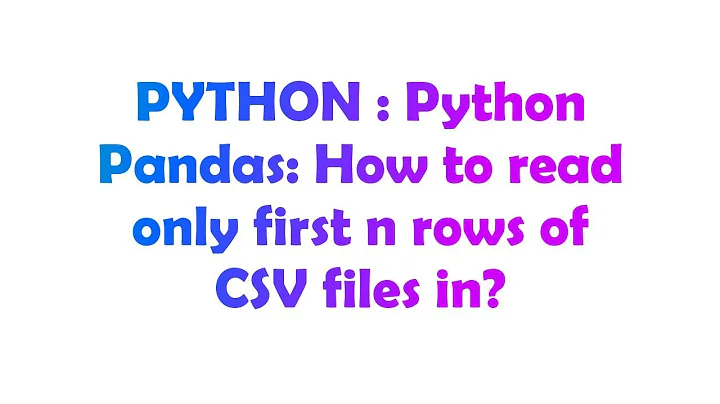Python Pandas: How to read only first n rows of CSV files in?
If you only want to read the first 999,999 (non-header) rows:
read_csv(..., nrows=999999)
If you only want to read rows 1,000,000 ... 1,999,999
read_csv(..., skiprows=1000000, nrows=999999)
nrows : int, default None Number of rows of file to read. Useful for reading pieces of large files*
skiprows : list-like or integer Row numbers to skip (0-indexed) or number of rows to skip (int) at the start of the file
and for large files, you'll probably also want to use chunksize:
chunksize : int, default None Return TextFileReader object for iteration
pandas.io.parsers.read_csv documentation
Related videos on Youtube
bensw
an engineer working with lots of data in many project at an international company. Crawling my way to become a JavaScript mastermind. I use Python, R, Julia, JavaScript and Java for my job. Have a genuine interest in Scala though recently and added that to my to-do book. My role is mainly dealing with Data Visualisation but not limited to.
Updated on July 08, 2022Comments
-
bensw almost 2 years
I have a very large data set and I can't afford to read the entire data set in. So, I'm thinking of reading only one chunk of it to train but I have no idea how to do it. Any thought will be appreciated.
-
smci almost 10 yearsThat's ok, they're slightly hidden. The doc could do with these examples.
chunksizeis a bit of a pain, you have to deal with unevenly-sized chunks. Also preallocate your arrays/dataframes with the fixed size you know you'll need, don't dynamically do concat/append whenever you can avoid it. -
smci almost 10 years...and also, it's not like the interface is
nstart=,nend=.... You have to do the arithmetic onskiprows = nend - nrows -
FooBar almost 10 yearsI guess that's just taken over from SQL:
LIMIT nstart, skiprows:/ -
smci almost 10 years...and don't forget off-by-n errors if you also use
header=n/list






